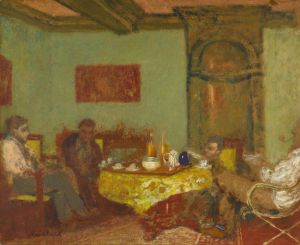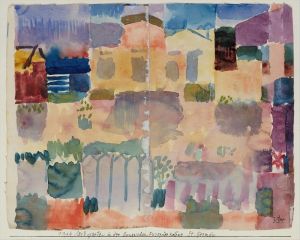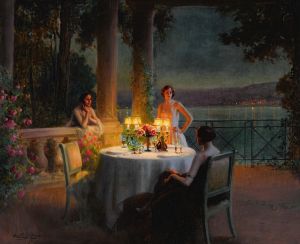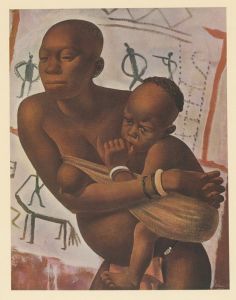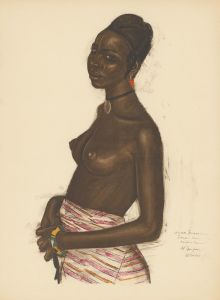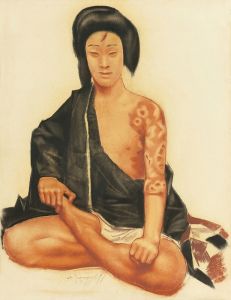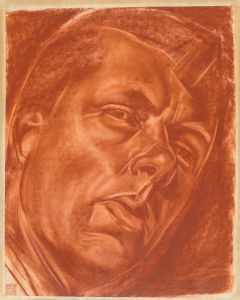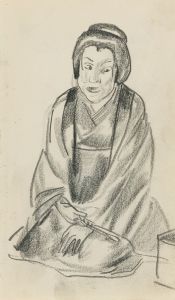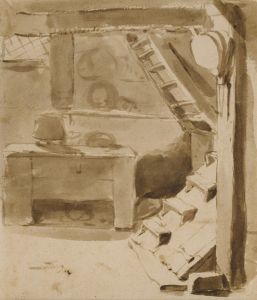
In einem Hammam in Tunis
A hand-painted replica of Alexandre Jacovleff’s masterpiece In einem Hammam in Tunis, meticulously crafted by professional artists to capture the true essence of the original. Each piece is created with museum-quality canvas and rare mineral pigments, carefully painted by experienced artists with delicate brushstrokes and rich, layered colors to perfectly recreate the texture of the original artwork. Unlike machine-printed reproductions, this hand-painted version brings the painting to life, infused with the artist’s emotions and skill in every stroke. Whether for personal collection or home decoration, it instantly elevates the artistic atmosphere of any space.
Alexandre Jacovleff's painting "In einem Hammam in Tunis" is a notable work by the Russian-born artist, who is renowned for his contributions to the Orientalist movement in art. Jacovleff, also known as Alexandre Yevgenievich Yakovlev, was born on June 1, 1887, in Saint Petersburg, Russia. He studied at the Imperial Academy of Arts in Saint Petersburg, where he developed a strong foundation in academic art techniques. His career took him across various continents, where he drew inspiration from diverse cultures and landscapes.
"In einem Hammam in Tunis" is a reflection of Jacovleff's fascination with North African and Middle Eastern cultures, a common theme among Orientalist artists who sought to capture the exoticism and allure of these regions. The painting depicts the interior of a hammam, a traditional public bathhouse, in Tunis, the capital of Tunisia. Hammams have been an integral part of Islamic culture for centuries, serving as places for social gathering, relaxation, and ritual purification.
Jacovleff's work is characterized by its meticulous attention to detail and vibrant use of color, which bring the scene to life. The painting captures the architectural features of the hammam, including its domed ceilings and intricate tile work, which are typical of Islamic design. The figures in the painting are depicted with a sense of realism and grace, reflecting Jacovleff's skill in rendering the human form. The use of light and shadow in the painting adds depth and dimension, enhancing the overall composition.
Throughout his career, Jacovleff was known for his ability to convey the essence of the cultures he encountered during his travels. His works often featured scenes from Asia, Africa, and the Middle East, and he was particularly interested in the daily lives and customs of the people he observed. This interest is evident in "In einem Hammam in Tunis," where he captures a moment of everyday life in a Tunisian bathhouse.
Jacovleff's travels were extensive, and he participated in several expeditions that further influenced his artistic output. Notably, he was part of the Citroën Central Asia Expedition from 1931 to 1932, which took him through parts of Asia and Africa. These experiences enriched his understanding of different cultures and informed his artistic practice.
"In einem Hammam in Tunis" is a testament to Jacovleff's ability to blend his academic training with his passion for exploration and cultural exchange. The painting not only showcases his technical prowess but also his sensitivity to the cultural contexts he depicted. As with many Orientalist works, it reflects the Western fascination with the "Orient" during the late 19th and early 20th centuries, a period marked by colonial expansion and increased interest in non-Western cultures.
Jacovleff's legacy as an artist is marked by his contributions to the Orientalist genre and his ability to capture the beauty and diversity of the world around him. His works continue to be appreciated for their artistic merit and their role in documenting the cultural landscapes of the time. "In einem Hammam in Tunis" remains an important piece within his oeuvre, exemplifying his skill and his enduring interest in the human experience across different cultures.





